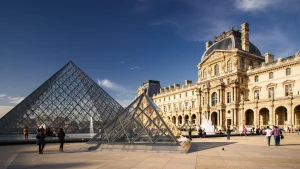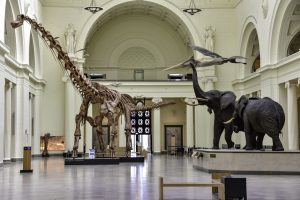- 21 May 2024
- 286
Must-See Museum Tours in Paris: A Cultural Journey

Paris, often dubbed the “City of Light,” is a global epicenter for art and culture. With its rich history and a vibrant contemporary scene, the city attracts millions of art enthusiasts annually. The streets of Paris are a living canvas, adorned with sculptures, murals, and historic architecture that echo its artistic legacy. The city’s museums, ranging from grand institutions to intimate galleries, house some of the world’s most revered art collections, making it an indispensable destination for art lovers.
Museum Tours in Paris
Museum tours in Paris offer a structured and insightful way to explore the city’s artistic treasures. These tours provide context, historical background, and expert interpretation that enrich the viewing experience. Whether through guided tours or self-paced audio guides, visitors can gain deeper appreciation and understanding of the artworks and their significance. These tours are crucial for both seasoned art aficionados and casual tourists, ensuring that everyone can engage with and appreciate the vast cultural heritage of Paris.

Geographical Information
Paris is a relatively compact city, and many of its major museums are conveniently located within close proximity to each other. The Louvre Museum, situated in the 1st arrondissement, is at the heart of Paris. The Musée d’Orsay is just across the Seine River, while the Centre Pompidou is located in the lively Marais district. The Musée de orangeries and Musée Rodin are also centrally located, making it easy to visit multiple museums in a single day.
Best Time to Visit Paris for Museum Tours
The best time to visit Paris for museum tours is during the spring (April to June) and fall (September to November) when the weather is pleasant, and the tourist crowds are thinner compared to the peak summer months. These periods offer a more comfortable and enjoyable experience, with shorter lines and less crowded galleries. Additionally, visiting during these times allows for participation in various cultural events and exhibitions that are often scheduled around these seasons.
Historical Development of Parisian Art
The art scene in Paris has ancient roots, dating back to Roman times. However, it was during the Middle Ages that Paris began to establish itself as a cultural center, with Gothic art and architecture, exemplified by the Notre-Dame Cathedral, gaining prominence.
The Renaissance and Baroque Periods
The Renaissance period brought a renewed interest in classical art and humanism to Paris. Artists like François Clouet and Jean Clouet played significant roles during this era. The Baroque period that followed saw the flourishing of grandiose and dramatic art and architecture, with the construction of the Palace of Versailles serving as a prime example.
19th Century Art Movements
The 19th century was a transformative era for Parisian art, marked by the rise of Romanticism, Realism, and Impressionism. Artists like Eugène Delacroix, Gustave Courbet, and Claude Monet revolutionized art with their innovative techniques and perspectives. The city became a hub for avant-garde movements, drawing artists from all over the world.
Modern and Contemporary Art
The 20th century continued Paris’s legacy as a center for modern and contemporary art. The advent of movements such as Cubism, Surrealism, and Abstract Expressionism saw artists like Pablo Picasso, Marcel Duchamp, and Henri Matisse contributing significantly to the city’s artistic landscape. Today, Paris remains at the forefront of contemporary art, with numerous galleries and institutions showcasing cutting-edge works.
History and Significance
The Louvre Museum, originally a royal palace, is the world’s largest and most visited art museum. Established in 1793 during the French Revolution, it houses an unparalleled collection of art spanning from ancient civilizations to the 19th century.
To fully appreciate the Louvre, it’s advisable to plan your visit in advance. Purchase tickets online to avoid long queues and consider joining a guided tour for an insightful experience. The museum is vast, so prioritize the exhibits you want to see and allocate sufficient time for exploration.

Hidden Gems in the Louvre
While the Louvre’s famous masterpieces draw the most attention, there are numerous lesser known yet equally captivating works. The Napoleon III Apartments offer a stunning look at opulent 19th-century decor, and the Islamic Art collection provides a rich tapestry of cultural artifacts.
Conclusion:
Nestled in the picturesque Tuileries Garden, the Musée de orangeries are celebrated for its unparalleled display of Monet’s “Water Lilies.” This intimate museum also boasts a remarkable collection of works by renowned Impressionist and Modern artists, making it a must-visit for art enthusiasts. The centerpiece of the Musée de Orangerie is undoubtedly Claude Monet’s “Nymphae’s” series, displayed in two large oval rooms designed to envelop viewers in the tranquil beauty of his water lily ponds. Additionally, the museum’s Jean Walter and Paul Guillaume collection includes masterpieces by Renoir, Cézanne, Matisse, Picasso, and Modigliani.

